

A Free E-Newsletter for Friends of Japan & Teachers of Japanese
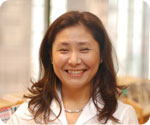
Happy New Year! (Akemashite Omedeto Gozaimasu)
I wish you all a healthy, happy and fruitful 2014.
As many of you may know, the Abbot of Kiyomizu temple in Kyoto announces the most popular Kanji character every December that reflects the mood of the past year. The kanji WA (輪)was chosen in 2013, which means circle and signifies the connections involved in networking with many people. It is also symbolic of the Five Olympic Rings hinting at Japan's successful bid for the 2020 Summer Games.
If you go by the phonetic sound of WA, it has the additional meaning of peace (和) and circulation of the new and the old (環).
Last month, ten member states of the Association of Southeast Asian Nations (ASEAN) got together in Tokyo and celebrated the 40th anniversary of ASEAN-Japan Friendship and Cooperation. On this occasion, Japanese Prime Minister Shintaro Abe announced to further enhance the Heart-to-Heart understanding between Japan and all ASEAN members by strengthening our mutual trust and friendship. To accomplish this goal, PM Abe pointed out three important points; 1) promote art and cultural exchanges as well as people-to-people exchanges, 2) enhance cooperation in education, including, among others, language learning, and 3) preserve diverse culture and traditions. This also happens to correlate to the main mission of the Japan Foundation.
I am particularly happy to know that the three kanji characters for WA (和、環、輪)were used in his message to promote cultural exchange and language education, which are becoming ever more important to furthering international understanding.
In the coming year, the Japan Foundation, Los Angeles, will continue to serve our friends here in the United States, and we sincerely wish for your continued support because a friend in need is a friend indeed.
Misako Ito, Director

From historical monuments to beautiful natural environments, currently, there are a total of 17 cultural and natural sites in Japan registered as UNESCO’s World Heritage Sites. Over 60 beautiful photographs of these sites taken by a renowned photographer, Kazuyoshi Miyoshi will be displayed as a two-part exhibition at JFLA starting January 28th through March 22nd during normal library hours.
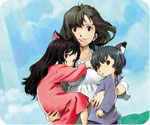
Older sister Yuki and younger brother Ame have a secret. They are “wolf children,” half human and half wolf. Their mother Hana met and fell in love with a wolf man. The family lives discreetly in a quiet corner of the city, keeping their secret to themselves. But one day, their father passes away. Their mother Hana then decides to take Yuki and Ame out from the city and live in the countryside surrounded by nature.
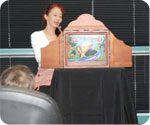
Come and explore Japanese traditional storytelling, Kamishibai. This paper theater storytime incorporates pictures, sounds, and movement for young children. It's also good for adults to learn Japanese culture and language. The program will be in Japanese with English handouts.

Peter Zellner, principal and founder of ZELLNERPLUS in Venice, CA and professor at the Southern California Institute of Architecture (SCI-Arc) will share his thoughts about his experiences in the Japan-US Curator Exchange Program sponsored by the Japan Foundation. Zellner along with a group of architects, scholars, and architectural curators from all over the U.S. visited projects at the Benesse Art Site in Naoshima, Aichi Triennale 2013, and the Tohoku area while exchanging opinions with architects and scholars in Japan.

Come join our casual and informative conversation café that starts off the new term of our language courses. You'll enjoy fun games and Japanese tea & snacks while chatting with native Japanese speakers - all levels are welcome! Japanese language experience is not necessary, but participants should be 18 and up. If you are interested in our JF Nihongo language courses, this is a good opportunity to visit our information center, see our classroom, and meet our staff.
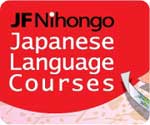
Winter term will be starting soon so register now to learn Japanese with us! JF Nihongo (Nihongo=Japanese) features fun and unique language courses for both new Japanese-language learners as well as those who are interested in improving their existing language skills. Get 10% off with the early bird discount when you register by January 10. Ready, set, register!

Greetings, educators! We have recently updated our Survey Report on Japanese-Language Education Abroad 2012 page to showcase the final results of the 2012 survey: Japanese learners have increased by 9.2% in the last three years! On this updated page you can find the answers to questions like: What textbooks are American teachers of Japanese using in the classroom? Have the numbers of Japanese language learners increased or decreased in my state? What problems and concerns are facing teachers of Japanese today? Please feel free to download the PDF graphs of the collected data and share them with your students, parents, and administrators in advocacy presentations and reports.
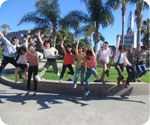
There are less than two weeks remaining to submit an application for the 2014 Japanese Language Education Assistants Program (J-LEAP). If you are interested in inviting a native Japanese teaching assistant to your school next year, please click below for more information!
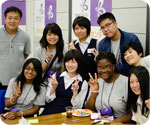
On March 11, 2011, two Americans participating in the JET Program as assistant English language teachers lost their lives during the Great East Japan Earthquake and Tsunami. They had a positive influence on the people and communities they served and JET-MIP was created immediately following the disaster to commemorate their work. This the fourth year of this program and we will again provide 32 high school students the opportunity to visit Japan, with a focus on the Tohoku region, and learn about Japanese language and culture first hand. To apply, applicants must take the 2014 National Japanese Exam organized by AATJ (Registration Deadline: February 8, 2014).
*Participate in a free Webinar on Sunday, January 12, from 1:00 - 3:00 p.m. Pacific time (4:00 - 6:00 p.m. Eastern time). Log in as a Guest at http://aatj.adobeconnect.com/r28uxv8jneb/ to hear the test developers give an orientation to this year's NJE and answer your questions.
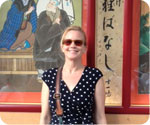
Every year, several non-native teachers nationwide are accepted to our teacher training program at the Japan Foundation Japanese Language Institute Urawa. The short term training program is offered in three durations at different times during the year for participants to improve their Japanese-language skills, teaching methodology, and their knowledge of Japan. Click below to read the read about experiences of Ms. Emily Orillon who participated in the short term program during the summer of 2013.
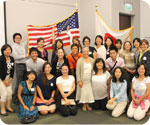
For the 2013-2014 school year, we invited 12 assistant teachers (AT) to various schools around the country as part of the Japanese Language Education Assistant Program (J-LEAP). This is the third year of this program where assistant teachers are invited for up to two years to aid in strengthening the Japanese language program at their respective schools. This month, we will feature the reports from the following ATs, who will describe their experiences at American high schools.

In July of 2013, 32 US high school students participated in the JET Memorial Invitational Program (JET-MIP). They travelled to Japan for a two week study tour of the Tohoku region, focusing on the cities of Rikuzentakata and Ishonomaki. These were the cities that Montgomery Dickson and Taylor Anderson were assigned during their tenure as JET Assistant Language Teachers. Sadly, they lost their lives during the Great East Japan Earthquake and Tsunami in March, 2011 and JET-MIP was created to commemorate their work. Participants took part in exchanges with local elementary, middle and high school students as well as local community groups with the purpose of fostering friendship and goodwill between both countries. Each month, we will feature four essays written by the participants describing their experiences in Japan. Click below to read about their unforgettable journey.